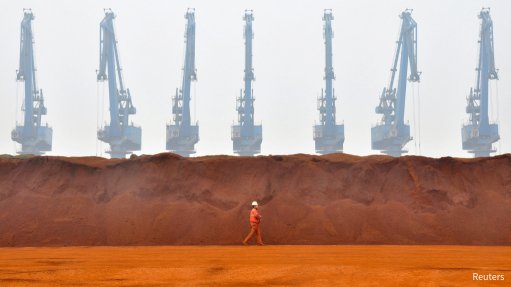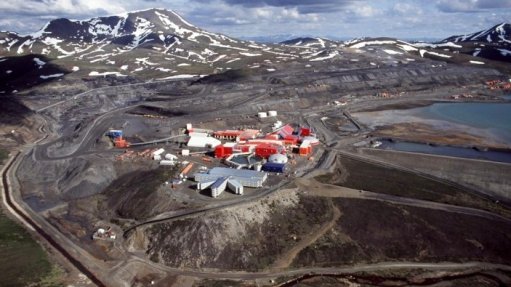Greenfield exploration essential to Australia


MINING LIMITATION Australia's mining sector is constrained by over-regulation, red tape and duplicated environmental laws across most jurisdictions
Photo by Bloomberg
Greenfield exploration expenditure in Australia has declined in absolute terms and as a share of total exploration expenditure over the past decade.
Association for mining companies Minerals Council of Australia (MCA) CEO Tania Constable believes this trend must be reversed to attract greater mining investment and continue receiving the economic benefits derived from mining.
“Brownfield exploration is an important part of mine development, but increased greenfield exploration activity is essential to discover deposits that could become the next generation of tier-one assets in Australia.”
In 2016/17, exploration expenditure in Australia totalled US$1.6-billion, but remains far below the peak levels recorded during the high-price phase of the mining boom in 2009.
“While exploration expenditure remains at a level that is consistent with its long-term historical average level, this is mainly owing to exploration at existing brownfield mines, rather than greenfield exploration to identify resources at new sites,” Constable says.
Market intelligence provider Standard & Poor Global estimates that world nonferrous mineral exploration expenditure totalled US$8.4-billion in 2017 – 15% more than in 2016. Australia’s share of this exploration expenditure was 13.6% in 2017, placing it second behind Canada.
“Despite the recent upswings in exploration expenditure in Australia, our share of world exploration expenditure has been declining over the past 20 years.”
Constable notes that private-sector investment in exploration in Australia will not occur if the prospects of developing an operational mine are poor because of excessive regulation, inflexible workplace relations practices and high tax rates.
“To maximise Australia’s investment potential, the Australian government should engage in extensive programmes of survey work; increase funding to industry partnership programmes and programmes that are developing new mining and processing technologies; and maintain immediate deductibility for eligible exploration expenditure.”
She explains that Australia’s mining sector is constrained by overregulation, red tape and duplicated environmental laws across most jurisdictions – all of which limit job creation and economic growth.
The Annual Survey of Mining Companies 2017, conducted by research and educational organisation the Fraser Institute, shows that Australian states are declining in attractiveness as potential mining investment destinations.
This shows that “governments have to do much more to retain competitiveness for our mining sector against rising international competition”, she adds.
Constable highlights that the Australian mining sector employs about 230 000 people in high-value and -skilled jobs, with workers earning about A$140 000 a year on average. Mining and mining services companies employ 1.1-million Australians, representing 10% of Australian jobs, she adds.
“Australia’s comparative advantage in mining is its high-skilled workforce, with the sector employing more geologists and geophysicists, as well as metallurgists and physicists, than any other industry.”
She says the industry is the third-largest employer of chemical and material engineers, industrial and mechanical engineers, and environmental scientists, as well as the fifth-largest employer of surveyors.
“Women participation is also rising, with mining companies leading the way regarding flexible workplace arrangements and paid parental leave. More than 33 400 women worked in the sector in 2017, up from 8 900 in 2001.”
Regulatory Challenges
Constable says future investment and employment in the Australian minerals industry are being put at risk because reform has stalled in the critical areas of streamlining project approvals and modernising workplace relations.
She avers that improvements in the regulation of workplaces are crucial because existing rules lock in poor practices that discourage investment, hinder productivity and innovation, and put high-wage jobs at risk.
“There is significant duplication between State and Federal jurisdictions that could be streamlined to accelerate assessment and approval processes,” she suggests.
Further, prohibitions and triggers within federal legislation relating to nuclear activities have had a negative impact on uranium mining investment in Australia, with no sign that this will improve in the near future, she adds.
Technology and Innovation
Constable is adamant that innovative technology, such as automation – along with drones, robotics and artificial intelligence – is changing the face of the modern mining sector.
“Increasing automation of mining and logistics is also changing the nature of work – miners are moving workers from mine sites to remote operational centres, but this also requires workers to enhance their skills.”
She enthuses that these developments are improving productivity, safety and efficiency in the Australian mining sector, which she believes is leading the world in innovation, health and safety, and productivity.
Constable indicates that in a survey of MCA member companies published in January, 70% of respondents cited research and development, as well as the adoption of new technologies, as important to achieving future improvements in productivity.
She nevertheless believes that the adoption of new technology and innovation in mining requires careful assessment and evaluation to ensure they meet the demanding requirements of mining operations and can deliver the potential benefits.
“In addition, the future success of the minerals industry will depend on highly skilled and technologically literate experts, including operators, engineers, environmental scientists and geologists.”
She says the opportunities for Australia’s mining industry presented by new technolo- gies and automation will be fully realised only when the next generation is inspired to pursue science, technology, engineering and maths – also known as STEM – disciplines.
“The MCA is working with our members and other industry stakeholders to develop a workforce strategy that addresses the predicted shortfall in qualified workers with the new skills required to support the future mining industry,” Constable concludes.
Article Enquiry
Email Article
Save Article
Feedback
To advertise email advertising@creamermedia.co.za or click here
Press Office
Announcements
What's On
Subscribe to improve your user experience...
Option 1 (equivalent of R125 a month):
Receive a weekly copy of Creamer Media's Engineering News & Mining Weekly magazine
(print copy for those in South Africa and e-magazine for those outside of South Africa)
Receive daily email newsletters
Access to full search results
Access archive of magazine back copies
Access to Projects in Progress
Access to ONE Research Report of your choice in PDF format
Option 2 (equivalent of R375 a month):
All benefits from Option 1
PLUS
Access to Creamer Media's Research Channel Africa for ALL Research Reports, in PDF format, on various industrial and mining sectors
including Electricity; Water; Energy Transition; Hydrogen; Roads, Rail and Ports; Coal; Gold; Platinum; Battery Metals; etc.
Already a subscriber?
Forgotten your password?
Receive weekly copy of Creamer Media's Engineering News & Mining Weekly magazine (print copy for those in South Africa and e-magazine for those outside of South Africa)
➕
Recieve daily email newsletters
➕
Access to full search results
➕
Access archive of magazine back copies
➕
Access to Projects in Progress
➕
Access to ONE Research Report of your choice in PDF format
RESEARCH CHANNEL AFRICA
R4500 (equivalent of R375 a month)
SUBSCRIBEAll benefits from Option 1
➕
Access to Creamer Media's Research Channel Africa for ALL Research Reports on various industrial and mining sectors, in PDF format, including on:
Electricity
➕
Water
➕
Energy Transition
➕
Hydrogen
➕
Roads, Rail and Ports
➕
Coal
➕
Gold
➕
Platinum
➕
Battery Metals
➕
etc.
Receive all benefits from Option 1 or Option 2 delivered to numerous people at your company
➕
Multiple User names and Passwords for simultaneous log-ins
➕
Intranet integration access to all in your organisation



















